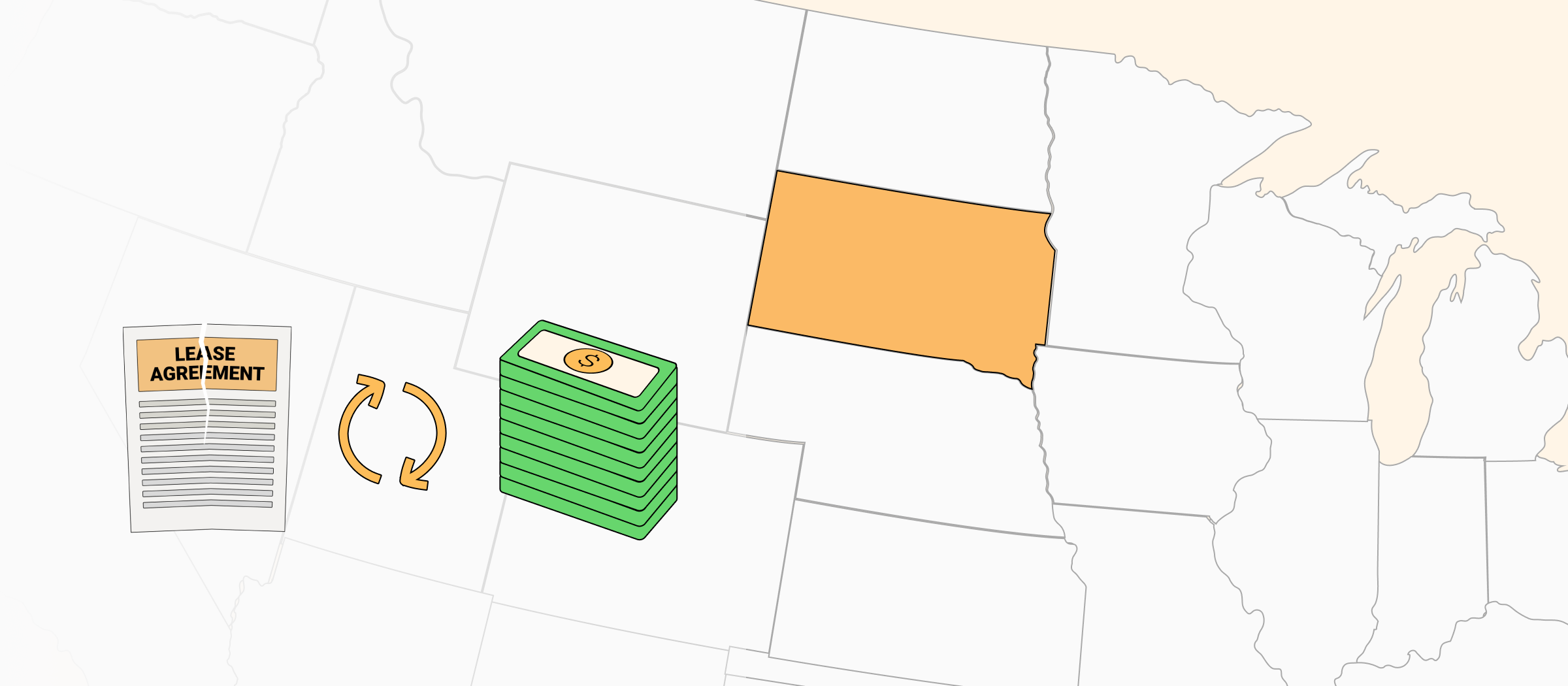In South Dakota, tenants that break their lease early may be held for all remaining rent due and any property damage. In addition, landlords in South Dakota are not required to make reasonable efforts to re-rent and may still be able to charge the old tenant when a new tenant cannot be found.
Breaking a Lease Early Without Penalty in South Dakota
In South Dakota, a tenant may break a lease without penalty under the following circumstances:
- Harassment or violations of the tenant’s privacy
- Retaliation against the tenant for requesting a repair or reporting to a government entity
- Death of the sole tenant
- Violations of the implied warranty of habitability
- Permanent change in military station resulting in relocation
- Refusal to reasonably accommodate a tenant with physical or mental disability
- Domestic or sexual violence
- Early termination clause
- Unenforceable, illegal, or void lease
In South Dakota, a landlord can charge an early termination fee if the tenant breaks a lease early, but it must be written into the contract along with the terms. For example, a landlord may require 30-days’ notice and 2 months’ rent in order to break the lease early.
How Much Remaining Rent Could Tenants Owe in South Dakota?
South Dakota does not have a law limiting the amount a tenant owes a landlord when breaking a lease early. A tenant could be liable for paying the remaining rent through the life of the lease. Furthermore, a landlord does not have to mitigate damages, which could increase the amount a tenant owes.
Landlord’s Duty to Mitigate Damages in South Dakota
In South Dakota, a landlord does not have to make a reasonable effort to re-rent their unit when a renter has broken a lease early. Landlords don’t need to try to rent their property quickly or keep their losses to a minimum when a tenant breaks the lease early.
Tenant’s Right to Sublet in South Dakota
A tenant can legally sublet in South Dakota, but only with the explicit permission of the landlord. Unless the lease states otherwise, a tenant’s right to sublease is contingent upon receiving the landlord’s written consent.
Even though a tenant might have permission to sublet, the landlord retains the right to reject a prospective subtenant. Reasons for rejection might include the subtenant being financially unable to make the lease payments.
If a tenant subleases their unit without the landlord’s explicit written permission, the tenant is in breach of their lease. In South Dakota, a lease violation permits a landlord to evict the tenant and subtenant (starting with a Notice to Comply or Vacate) and to sue the original tenant for any resulting damages.
In addition to the landlord, the subtenant also may have grounds to take legal action if the original tenant sublet the unit without the landlord’s permission.
Consequences for Moving Out Early in South Dakota
If a tenant breaks their lease and moves out early, the potential consequences include:
- The landlord keeping the security deposit
- The landlord suing the tenant for damages
- A lower credit score
- A potential bad reference in the future
Can the Landlord Keep the Security Deposit?
If a tenant breaks a lease early, the landlord may be able to keep all or part of the security deposit depending on how much the tenant still owes in damages or remaining rent.
A landlord may deduct from the deposit the amount of rent the landlord loses when a tenant breaks a lease early. The original tenant will continue to owe rent until a new tenant is found. If the owed rent becomes larger than the deposit amount, the landlord can hold the tenant liable for the difference—regardless of whether the landlord has made a reasonable effort to re-rent the unit.
A landlord will be able to deduct property-related damage costs from the security deposit. The damages must have been caused by the tenant’s negligence and carelessness and not normal wear and tear.
Can the Tenant Be Sued for Damages?
If a tenant breaks a lease early in South Dakota, the landlord can sue a tenant for a breach of contract for the remaining rent due or for any property damage. Damages for less than $12,000 are considered “small claims” in South Dakota and should be filed in South Dakota Small Claims Court.
If a landlord files in small claims court, they cannot bring a claim for more than $12,000. If suing for damages greater than $12,000, a landlord can file a claim in the Circuit Court for the county in which they live.

